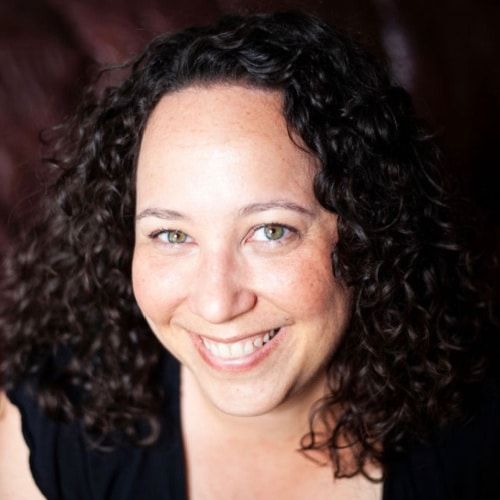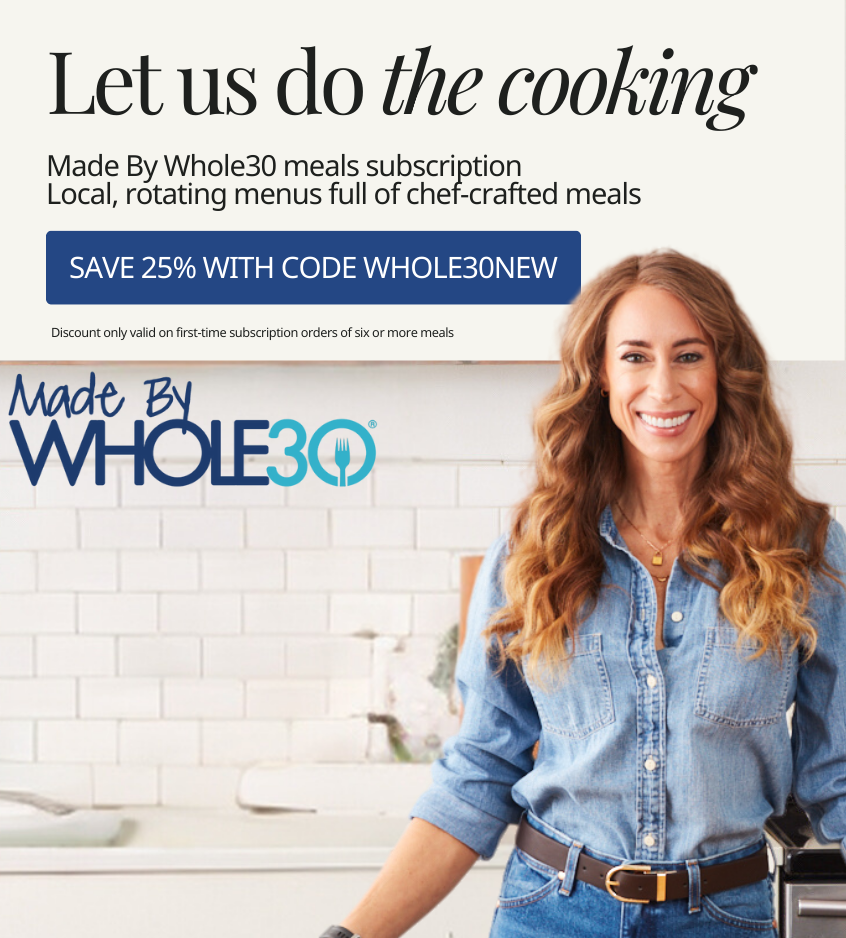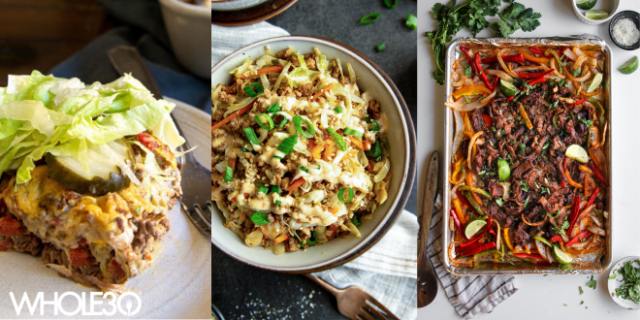We’ve saved the best part of the Whole30 for last: Food Freedom.
The Whole30 consists of the 30 day elimination phase, the reintroduction phase, and Food Freedom.
Wondering what Food Freedom is? Food Freedom is feeling in control of the food that you eat, instead of food controlling you. Wondering what Food Freedom looks like? Experiences of Food Freedom are as diverse as our community. Every Food Freedom journey is different, with different joys and challenges, diverse diets, and a unique sense of empowerment for every individual.
With this series, we want to celebrate Food Freedom by sharing snapshots of what Food Freedom looks and feels like members of our Whole30 HQ team and Certified Whole30 Coach community. We’ll be sharing more snapshots throughout the year so you can see what this looks like for other people as you navigate your own Food Freedom journey. To see past snapshots click here.
Here’s a little background about our contributors:

Whitney Stuart
Whitney Stuart MS RDN/LD CDE is a registered dietitian-nutritionist, board-certified Diabetic Educator and award-winning Advanced Whole30 Certified Coach. Whitney’s nutritional expertise has been featured in media segments for ABC, NBC & Business Insider. She has served as an expert health consultant to numerous restaurants and food brands. She is an active member of the Academy of Nutrition and Dietetics and has been Voted Dallas #1 Dietitian since 2019. Her virtual practice, Whitness Nutrition, focuses on nutritional empowerment with an emphasis on real food for real joy. Learn more at whitnessnutrition.com

Ashley Maynard
Ashley Maynard, Whole30 Director of Finance, has over 15 years of experience in finance & accounting specializing in the retail food & beverage space, as well as mission-oriented enterprises. A self-proclaimed nerd, she is passionate about numbers and telling the unique story of a business through financial models & reports. Ashley is originally from Georgia, where she graduated from Georgia Southern University with a BBA in Finance. She can usually be found galavanting around New York City with a coffee and camera in hand. She is an avid reader, amateur photographer and last minute flight-booker.
When did your Food Freedom Journey start and what main pain points led you to work toward finding it?
I didn’t realize that a Celiac diagnosis with other food intolerances and delayed gastric emptying would be the start of my Food Freedom, but it was! In 2009, after this diagnosis, my healthcare provider put me on an elimination diet that included medical food shakes twice daily, and I unintentionally lost weight rapidly. Although this elimination gave me a clean slate, I desired real food and to regain my health for the long run. I found Mel Jouwan’s blog and was fascinated by the, at that time, Whole9 community. It worked with my food allergies, but was also so abundant!
I completed my first Whole30 sometime in 2012. I was so dependent on caffeine and sugar to get through the day and I really wanted to change that. I dreaded the 3pm slump everyday. I wanted to reclaim the power that I had over my body and mood as much as possible.
What’s been the hardest part of the process for you? Where are you still growing in your Food Freedom?
As a dietitian, I am constantly faced with the “smaller is better” dialogue from both the patients I treat and the practitioners I work with. It is hard to make nourishment sexy for others and for myself. Even as an educated dietitian, I have this internal battle! I am human, I am woman. It is hard to remind myself that deprivation isn’t the best choice because thinness isn’t the solution.
When I’m honest with myself, there are still many days that I want to eat away my feelings and dive face first into a cheeseburger, fries, and milkshake. Through a lot of trial and error I know the milkshake is not going to be worth it in about an hour. But I’ll do ok with the cheeseburger and a few fries.
What’s been the greatest joy of the Food Freedom process?
Communal dining. After my elimination diet period and two Whole30 resets, I found that most foods still worked for me outside of gluten, corn and dairy. My husband and I have relished in cooking full meals together, and eating alongside one another. Previously, I felt isolation and anxiety in eating a separate meal from my family. Although we have differences in our food tolerances, I keep our house 100% safe for me. This has been a game-changer to remove the feelings of “yes” and “no” foods.
My greatest joy in food freedom has really been the power that I feel in making my food choices and setting boundaries. I tend to be a very black & white thinker so giving myself grace in the grey has been a journey. I love that it translates into other areas of my life as well.
What does a typical day of eating look like for you?
6AM: During the work week I start my day with a large glass of water as I drive to a morning workout. 80% of the time I have a water iced americano post-workout while I look through patient charts.
8:30AM Sometime before 10AM I have leftovers for breakfast; turkey tacos with a cassava tortilla and sautéed veg with a cutie orange was on today’s docket.
12:30PM I eat lunch in my backyard while throwing the ball for my pup; it’s usually thrown together from components we prep over the weekend. Yesterday I had shredded pork, arugula, black beans, a sprinkle of hemp hearts a handful of raspberries.
3PM I take jerky, an apple and sparkling water back to the office for a snack.
7:30PM Three nights out of the week, we use a prepared meal service for dinner. Last night I had chicken thighs with parsnip mash sautéed kale. I added a Poppi drink
6:30 – I’m still a coffee drinker and look forward to that ritual every morning. I usually add some Nutpods, Bubs MCT powder and sometimes collagen powder.
7:30 – I make it through the day more gracefully when I have lots of protein in the morning so breakfast is usually some version of eggs and whatever veggies are in the fridge – potatoes and bell peppers are my fave.
12:00 – Lunch is usually a big salad. I’m very thankful that Sweetgreen is around the corner! I tend to need an afternoon snack which is usually a Chomps or sliced turkey, veggies with ranch, or a piece of fruit.
5:30 – Dinner is a lighter meal for me and I hate all the cleanup in my tiny NYC apartment. I like to keep it simple by throwing some brussels sprouts, broccoli and chicken thighs with coconut aminos on a sheet pan and call it a night.
What’s your favorite Food Freedom meal?

Any meal that I’m not compelled to count the caloric value subconsciously in my head. Every meal where I’m fully present in the taste and texture, not the nutritional qualities of it. As a dietitian, I have to force myself to turn off the clinical side and just eat. This could be beachside ceviche and a tequila with lime, or a Sunday afternoon coconut milk gelato trip.
Pizza. Definitely pizza. I’m currently testing all the pizza in NYC to determine which ones are “worth it”.
What does Food Freedom mean to you?
Nourishing my body with the most abundant variety of food possible while listening to internal hunger cues for how much and how often I eat. Food Freedom has no affiliation with the “shoulds” or the rules of diet culture and stands free of counting and keeping score.
Food Freedom is feeling empowered over my choices. I’m no longer controlled by the petulant toddler that was my sugar dragon. Actually, I don’t need sugar at all and I love coffee so much I’d choose decaf. I also don’t look at food as “good” or “bad,” just a decision, and that has been liberating!

















